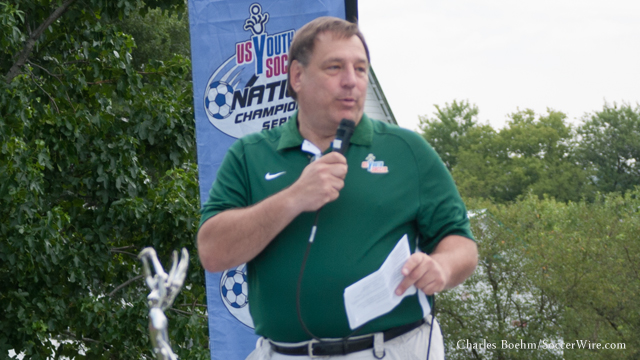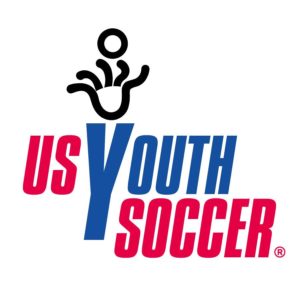SoccerWire Q&A: US Youth Soccer’s John Sutter on his organization’s need to evolve

GERMANTOWN, Md. – After enjoying a near-monopoly on the nation’s enormous youth soccer industry for decades, US Youth Soccer has experienced waves of disruptive change since the turn of the century. 
New competitors like US Club Soccer have risen to challenge the organization’s way of doing things, and the U.S. Soccer Federation has moved to improve the efficiency of the nation’s player development infrastructure with the creation of its Development Academy league, to name just two of the more jarring events to befall USYS.
But even as much of the upper crust of its elite membership has flaked away to join the DA, its girls equivalent the Elite Clubs National League and other upstarts, US Youth Soccer remains a colossus on the landscape.
Four regional authorities, 55 state associations, some 300,000 coaches and 600,000 volunteers administer the beautiful game to more than 3 million registered players aged 5-19 nationwide in both recreational and competitive travel capacities.
And there was plenty to like about the US Youth Soccer National Championships, the organization’s showcase national event, which unfolded at the Maryland SoccerPlex last week with all the pomp and drama that the occasion deserved. US Youth Soccer president John Sutter was on hand to personally award trophies, plaques and medals to the national champions and runners-up on Sunday, and was kind enough to chat briefly about the state of his organization with SoccerWire.com.
SoccerWire.com: How has this championship week gone for you? You and your staff have certainly created a beautiful atmosphere here at the SoccerPlex.
John Sutter: Absolutely, it was a fantastic week. Couldn’t ask for better weather, a wonderful complex – it’s been just an incredible experience. We try to make it something that’s memorable for all the players that are here and I think that happened.
+ READ: 2014 US Youth Soccer National Champions crowned in Germantown, Md.
SW: Where do things stand in the big picture? With the youth soccer landscape in flux, you’re facing a great deal more competition and complexity than in the past.
JS: Without a doubt, the soccer landscape has changed. I mean, we’re 40 years old this year. Still 3 million players, still the largest youth sports organization in the world. I still believe that the programs that we have and everything we do – we do better development for the players than [what’s] out there. When we take kids that come through the system, we’re developing them as individuals and as players, trying to give them the opportunity to go as high as they can, whatever they’re willing to work for, whatever they want to shoot for, we give them that opportunity.
That being said, definite challenges out there, some extremely good competition that’s out there, offering some alternatives. We need to look at ourselves, look at our programs, make sure that we continue to improve and increase, and concentrate on what we’re trying to do, so that we keep our programs top-notch. Look at where we need to change a little bit, where we need to adjust some things, maybe bring some new things in. But we want to stay on the cutting edge and try to make sure we’re providing our players the best opportunities that they have. We do that through supporting our state organizations, which are the grassroots.
 SW: You made some changes to your bylaws at your annual general meeting this weekend. Can you tell me more about that?
SW: You made some changes to your bylaws at your annual general meeting this weekend. Can you tell me more about that?
JS: It went very well. Our bylaws – with changes each year – are the same that they started out with 40 years ago. So it was a big opportunity for us to say, ‘What are we going to do going forward?’
So we’re looking at making ourselves more lean, maybe more adaptable, quicker to react, giving us flexibility that we don’t have in the original structure, in the way that we had to do things. If we wanted to do something, it took us a long time to get it processed and through all the channels.
Now we’re trying to streamline that – our board becomes more of a policy board so we can look at where US Youth Soccer wants to be. Put a little bit more of empowerment into the staff, and to the states, to give them the ability to do that. But I think you’re going to find a more nimble organization, so we can do those things that I talked about: Look at the programs, enhance new programs, get them out there so we can stay on that cutting edge.
SW: So much of US Youth Soccer’s infrastructure is based on volunteers, at the local, regional and national levels alike. Many of your competitors employ full-time professionals, whether it be coaches or administrators. Do you think the volunteer approach is being pushed out by professionalization?
JS: Our strength is our volunteers, and so they will remain a core. We couldn’t do what we do did, with events like this and the series of championships and state cups and everything to have teams earn their way into the national championships, without a cadre of volunteers. All of our states are operated by volunteers, because there’s got to be somebody with boots on the ground that actually puts the games on. 
That being said, you look across, all of our states have executive directors, all of our states have directors of coaching that are all good coaches in that regard. It’s not just a person that’s the staff, it’s a group of people that are staff. So we’re professionalizing, without a doubt, as well. But that doesn’t mean that our volunteers aren’t professional, either, because they’ve come from all walks of life and they do a really good job in doing that. So we will still rely heavily on our volunteers. But, we have that move that we need to make, and it’s been there all along.
With the professionalization on the coaching side, more and more coaches come in where that’s their career and that’s what they want to do. And we’ll continue to see that. The other thing we’re doing is using those professional coaches to, even the volunteers at the very bottom, make sure that those coaches are trained as best as they can, so we bring those coaches along. They may not be As [A-licensed] coaching our Under-6s, because there just are not enough of them, but they’re going to be better coaches, and sooner. And at lower levels, you’ll see higher-level coaches [influencing] those players, and that’s what we want to have.











